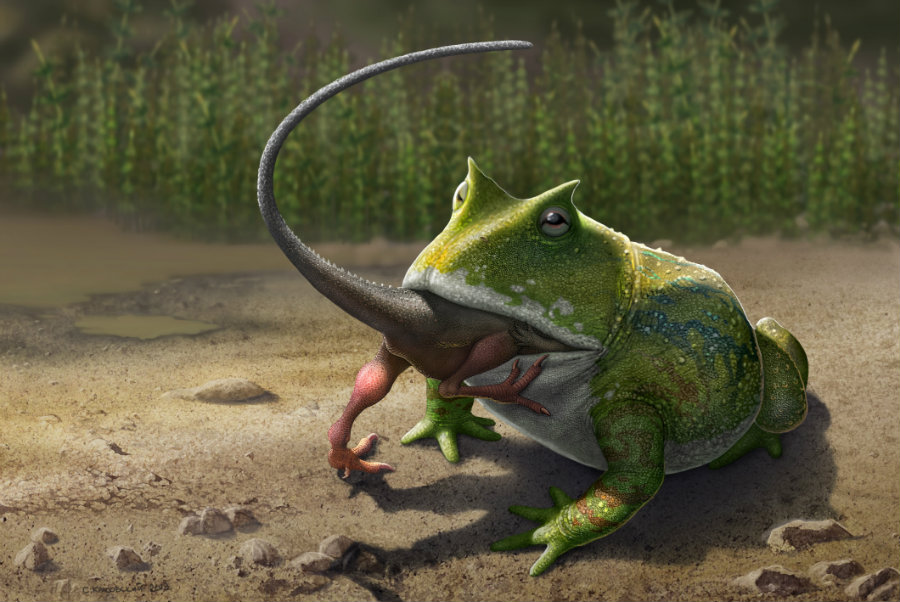International scientists believe that the ancient, large frog called Beelzebufo, which lived 68 million years ago in Madagascar and is now extinct, could eat little dinosaurs due to its extremely powerful bite, similar to mammalian predators – according to a study published today in the Nature journal Scientific Reports.
After studying the strength that the smaller, horn-frog of South America has in its bite, the experts concluded that it’s a possibility that the Beelzebufo fed on little reptiles. The closest living relatives of Beelzebufo ampinga, who’s from the living genus Ceratophrys, is also called Pacman frog due to the similarity the animal has with the video-game character. It currently lives in Uruguay, Argentina, and Brazil.

This horned frog is very popular in the international pet trade due to the color of its body, voracious appetite, and comically big head. According to Sean Wilcox, a Ph.D. candidate at the University of California, people also laugh at them “because of their big heads and fat, round bodies.”
“Unlike the vast majority of frogs which have weak jaws and typically consume small prey, horned frogs ambush animals as large as themselves,” said Dr. Marc Jones, a University of Adelaide’s School of Biological Sciences researcher. “Including other frogs, snakes, and rodents. And their powerful jaws play a critical role in grabbing and subduing the prey,” the honorary researcher at the South Australian Museum told.
The ancient horned-frog’s bite had the force of a wolf
The research was carried by scientists from the University of Adelaide, California State Polytechnic University – Pomona, University of California – Riverside and UCL, University College London. They decided to study the horned frog found in the tropical, and subtropical moist lowland forests of South America due to the complex similarities both frog bodies have between them.
The experts used a custom-made force transducer, which let them measure the strength of any animal that bites the device with two plates covered with leather.
Comparing to small horned-frog, with a head width of just 4.5cm and an estimated force of 30 newtons (N), this bigger horned frog can bite very much stronger. Those that have a head width of up to 10 cm can reach a bite of 500 N, like small ancient reptiles. However, experts know that the Beelzebufo was much bigger, which led them to estimate that the force of this extinct frog could have reached around 2200 N, which is the same strength a wolf or female tigers have in their bites.
The brutality of the Beelzebufo’s bite let the horned frog eat “small and juvenile dinosaurs that shared its environment,” said Dr. Jones. However, it also depended on the type of skin and protection the little prey had against predators.
“This is the first time bite force has been measured in a frog,” said Professor of Biological Sciences at California State Polytechnic University – Pomona. “And, speaking from experience, horned frogs have quite an impressive bite, and they tend not to let go. The bite of a large Beelzebufo would have been remarkable, definitely not something I would want to experience firsthand,” as reported by Phsy.org
Source: Scientific Reports
